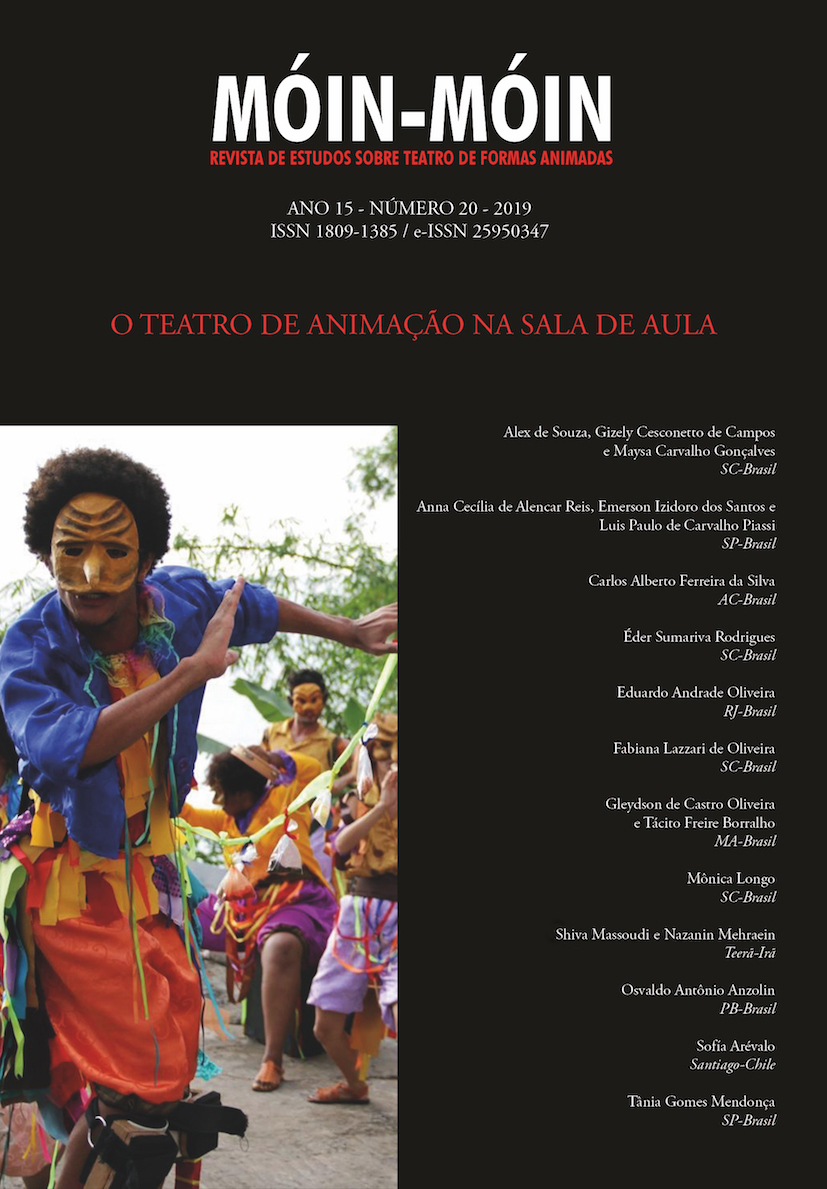From an image to performance: dramaturgy for image- based performing
DOI:
https://doi.org/10.5965/2595034701202019237Abstract
Undoubtedly, it is impossible Teaching any kind of Art without contemplating the others. Based on dissolving the borders of di erent kinds of arts then interdisciplin- ary trends is so prevalent in Contemporary art. e appearance of elements of other kind of Art like Photo, video in eatre emphasizes on revising method of teaching. In Puppet eatre which has essentially synthetic quality of performance with di erent styles of manipulation and animation up to any Artist, this issue is very important. e entrance of new media to puppet theatre have been more strong and e ective because of some overlapping aspects between puppet theatre and cinema, painting and etc. To harmonize with new interdisciplinary art revising teaching method especially in directing course as nal step is necessary. Image has signi cant and crucial role in our current life and culture. e appearance of virtual media in life of humans, makes image the strongest and closest communication channel with the world. en creating and then reading image is fundamental for artists as well as audiences and naturally must be learned in all kinds of visual art or performing art. Reading image has three step which include from exact observation to pull out motifs and symbols and nally search about characteristic of images which relate the world of image to other worlds. Reading an image could help to implied direct or indirect meaning of an image and use it as a dramaturgical adaptation meaning, transformation it as a text to create a piece. Directing course in Puppetry academy mostly is nal course in which student prepareaperformance.Teachingdirectingdividedintwoskills:Technicaldirectingand Artistical directing. In Technical directing students learn technical aspects of directing but Artistical directing is about director’s approach, the insight of director. Starting with image is a good method for teaching Artistical directing and improve directing approach. is method could help the students to learn making meaning, to learn better seeing, to learn creative looking and reveal hidden meanings. this is applied in stage directing class for puppetry student in B.A and have 4 steps which is start by a selective painting. In rst step painting is introduce as a text and adopted to puppetry performance. second step is rst part of Dramaturgy which is analyzing painting and has six stages. ird step is second part of dramaturgy which is making narration or story and in last step the student search for a puppetry visualization. By achieving the narration and nding the puppetry visualization, the process of rehearsal begins. Also, in this process, light, sound and music are designed and nally each student show his performance which maybe goes toward innovative styles, or di erent theatre forms including object theatre, digital theatre. is method Improving image-mind skills, improving dramaturgical skills, introducing painting (or photo) as a new material for creating puppetry performance and Emphasizing on the strength (power) of Puppet eatre as a kind of performing art which can embrace all modern approaches.
Downloads
Downloads
Published
How to Cite
Issue
Section
License
The readers are free to transfer, print and use the articles published in the Magazine, as long as there’s explicit mention to the author(s) and to Móin-Móin Magazine - Studies in Theater of Animated Forms and there are no changes on the original work. Any other use of the texts needs to be approved by the author(s) and the Magazine. In submitting an article to Móin-Móin Magazine - Studies in Theater of Animated Forms and have it approved, the author(s) agree to give away, without payments, the following rights to the Magazine: first publishing rights and the license for the Magazine to redistribute this article and its metadata to index and reference services that the editors consider appropriate.
The articles whose author(s) are identified represent the author’s point of view and not the official position of Móin-Móin Magazine. The author(s) commit to always mention the publication in the following way when publishing work in reference to the article published in Móin-Móin Magazine:
“This article was originally published by Móin-Móin Magazine volume (insert the volume), number (insert the number), in the year of (insert year) and can be accessed on: http://www.revistas.udesc.br/index.php/móin"
Plagiarism in any way constitutes an unethical publishing behavior and is unacceptable. Móin-Móin Magazine holds the right to use software or other plagiarism tracking methods to scan the submitted works.
![]()
This journal uses Attribution-NonCommercial 4.0 International– (CC BY NC 4.0).






